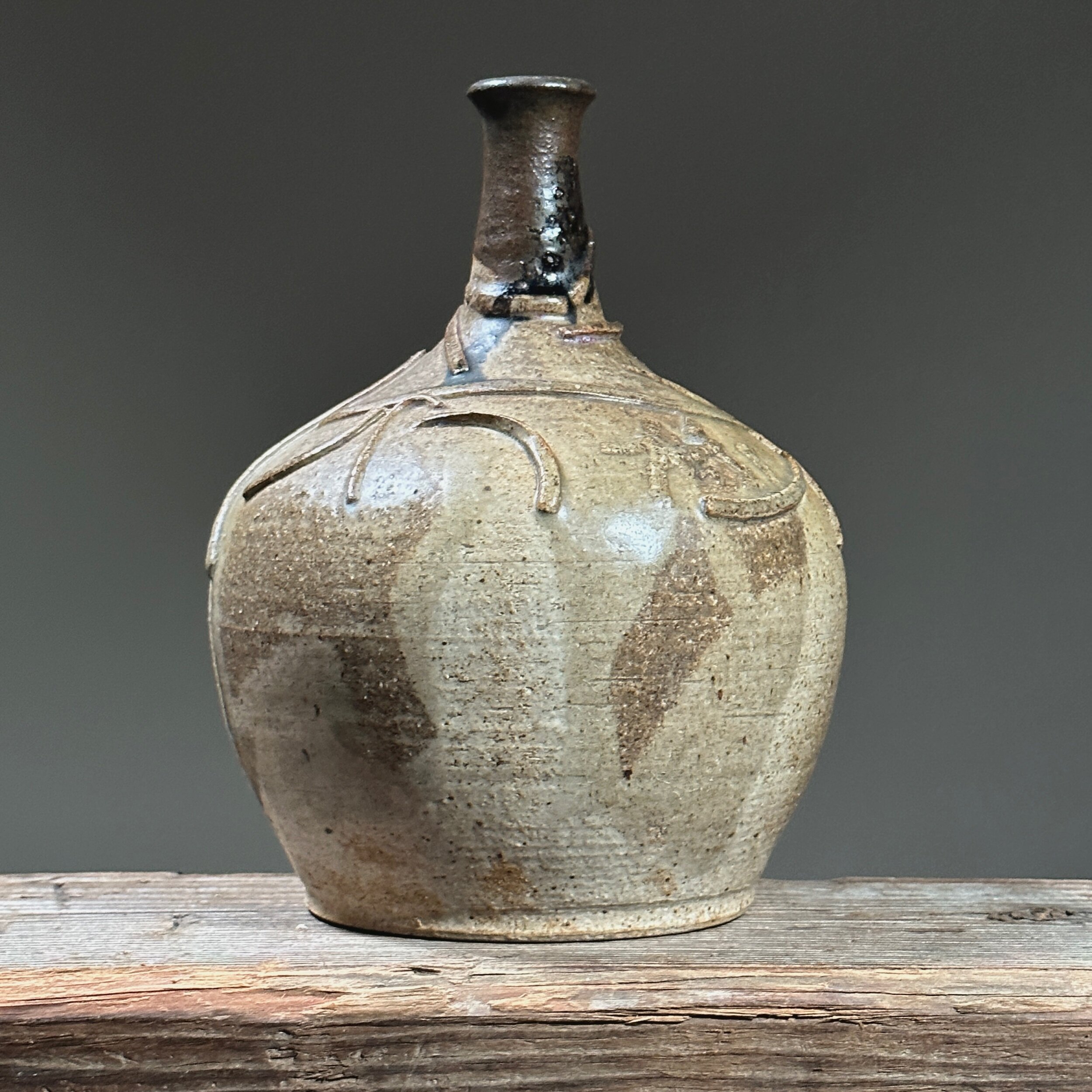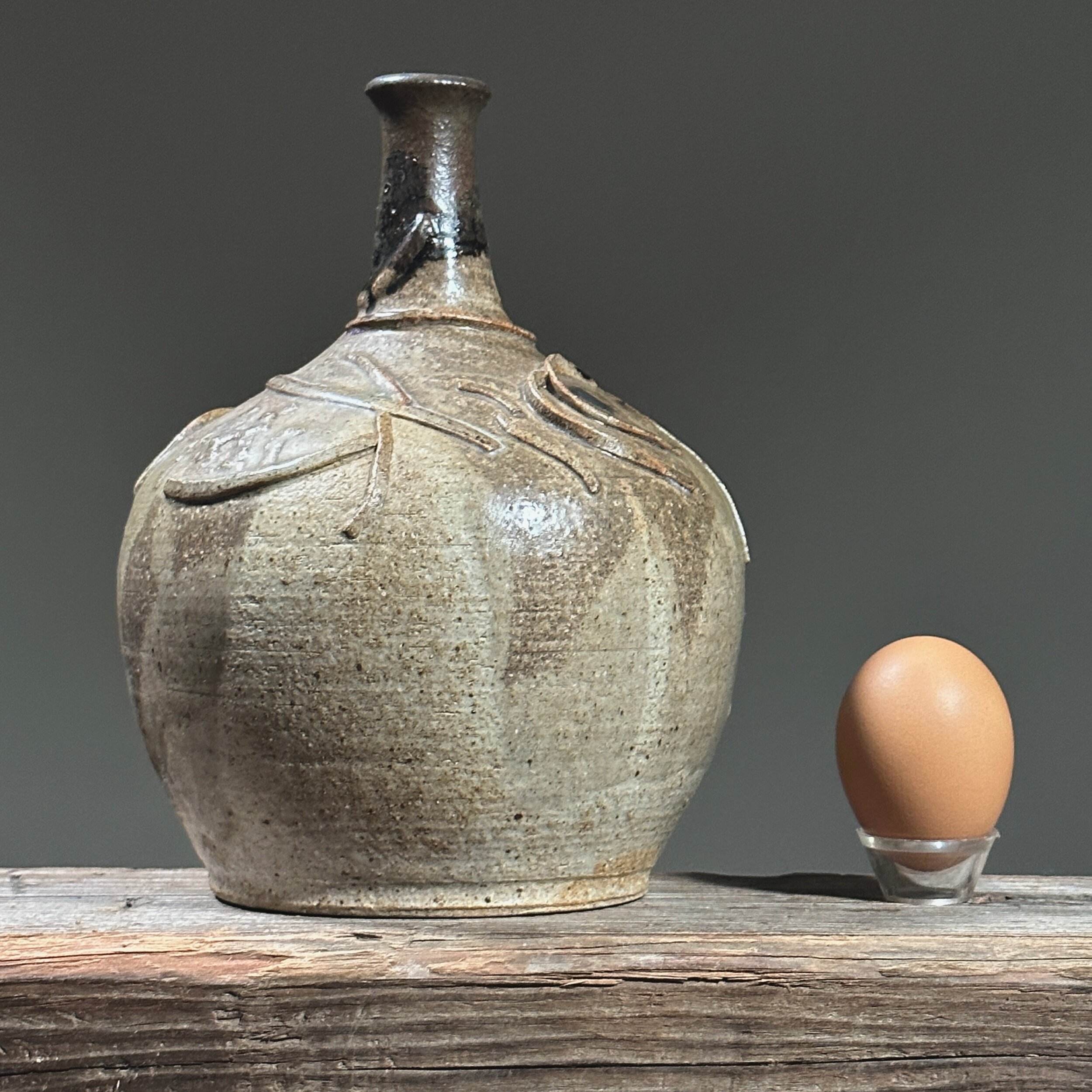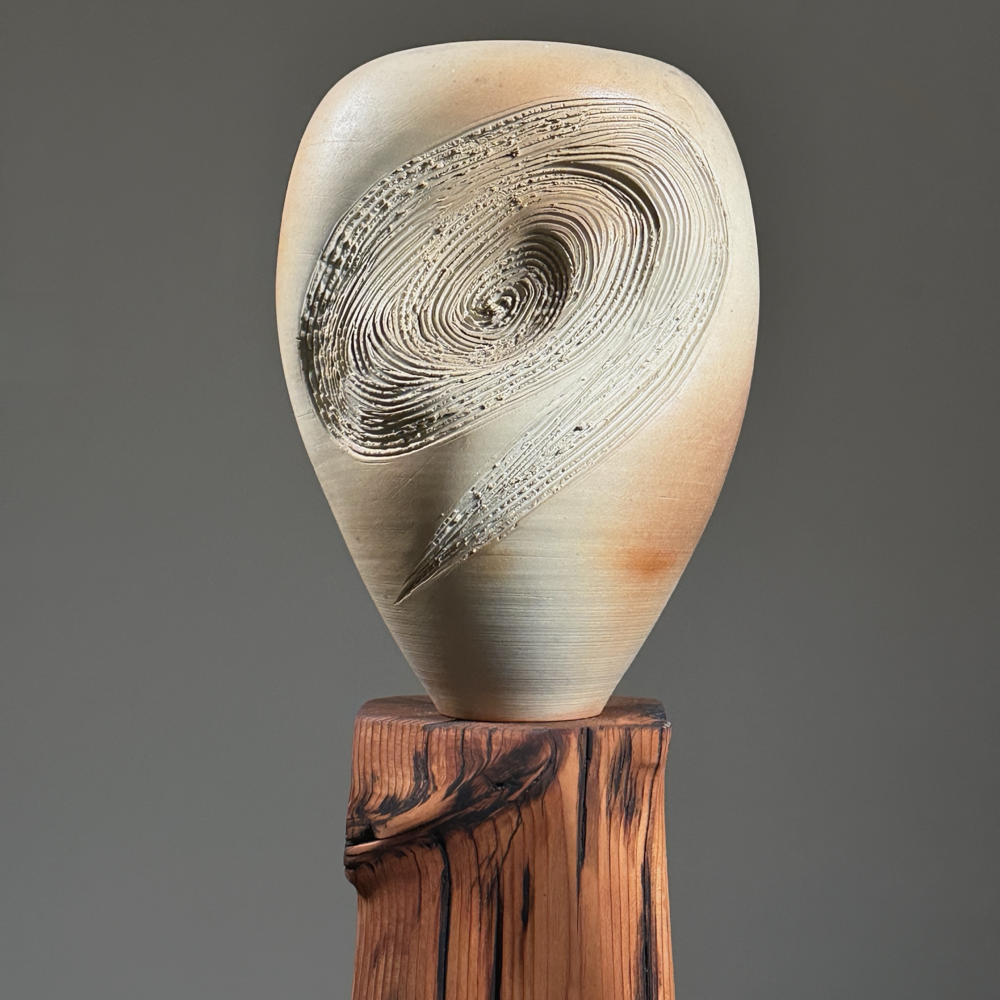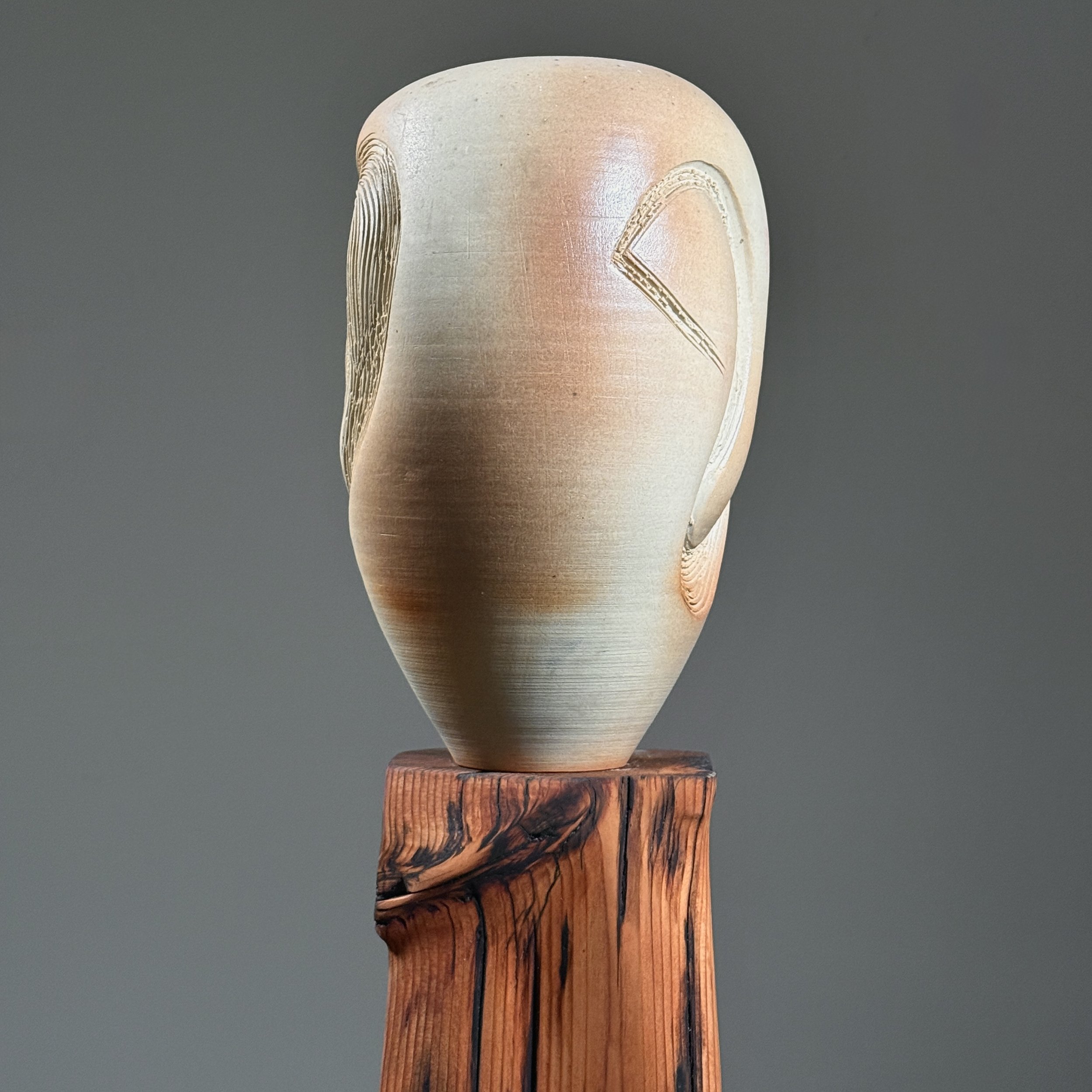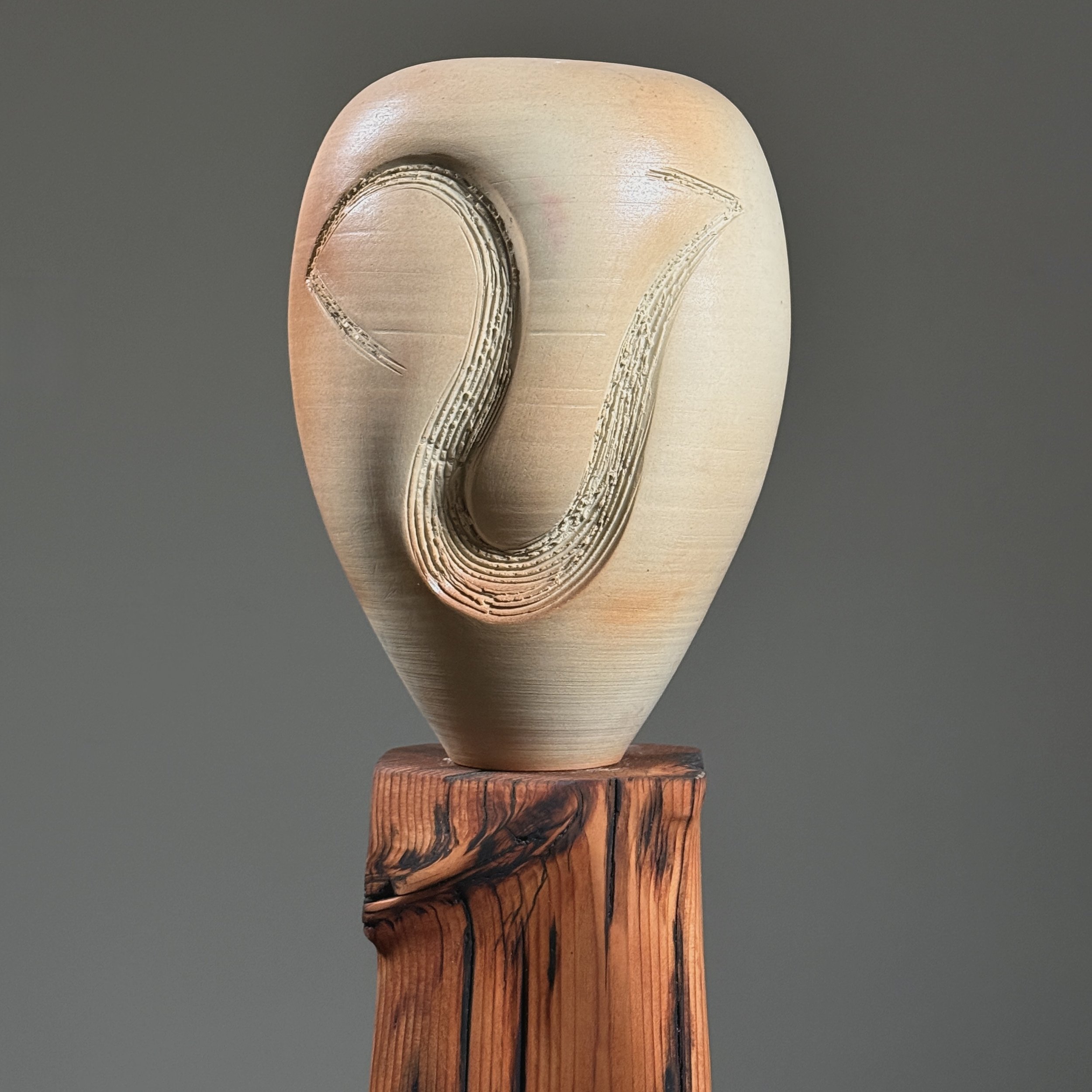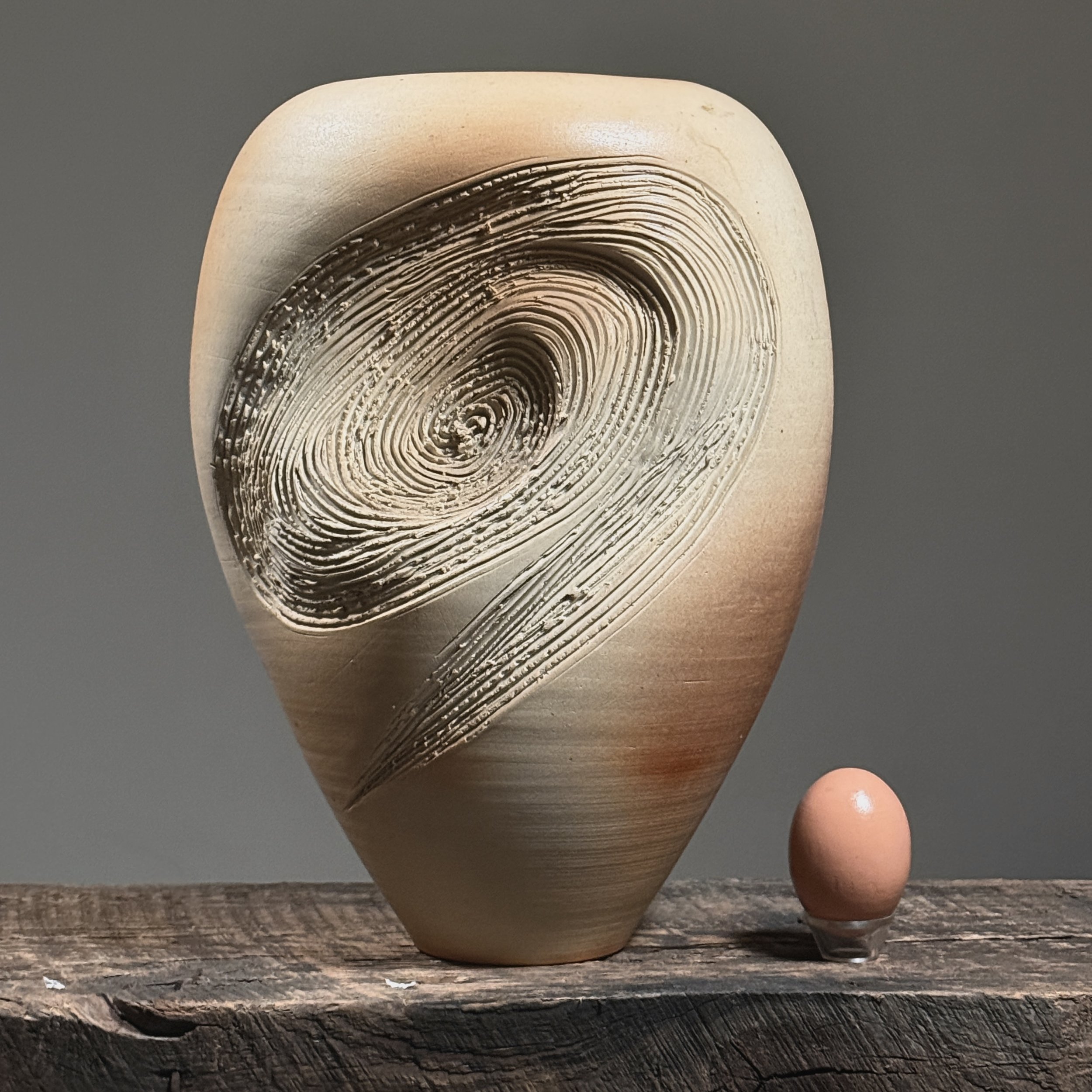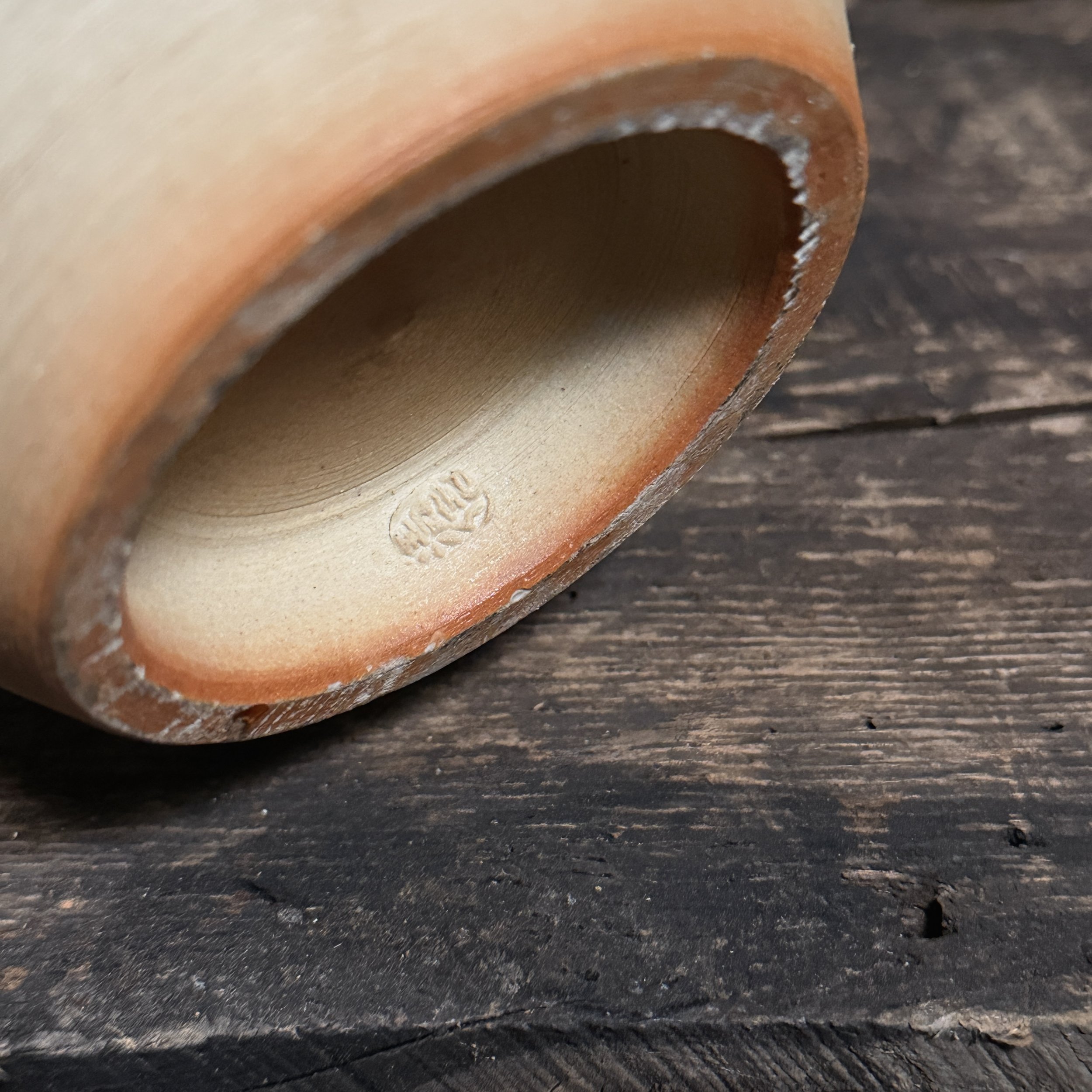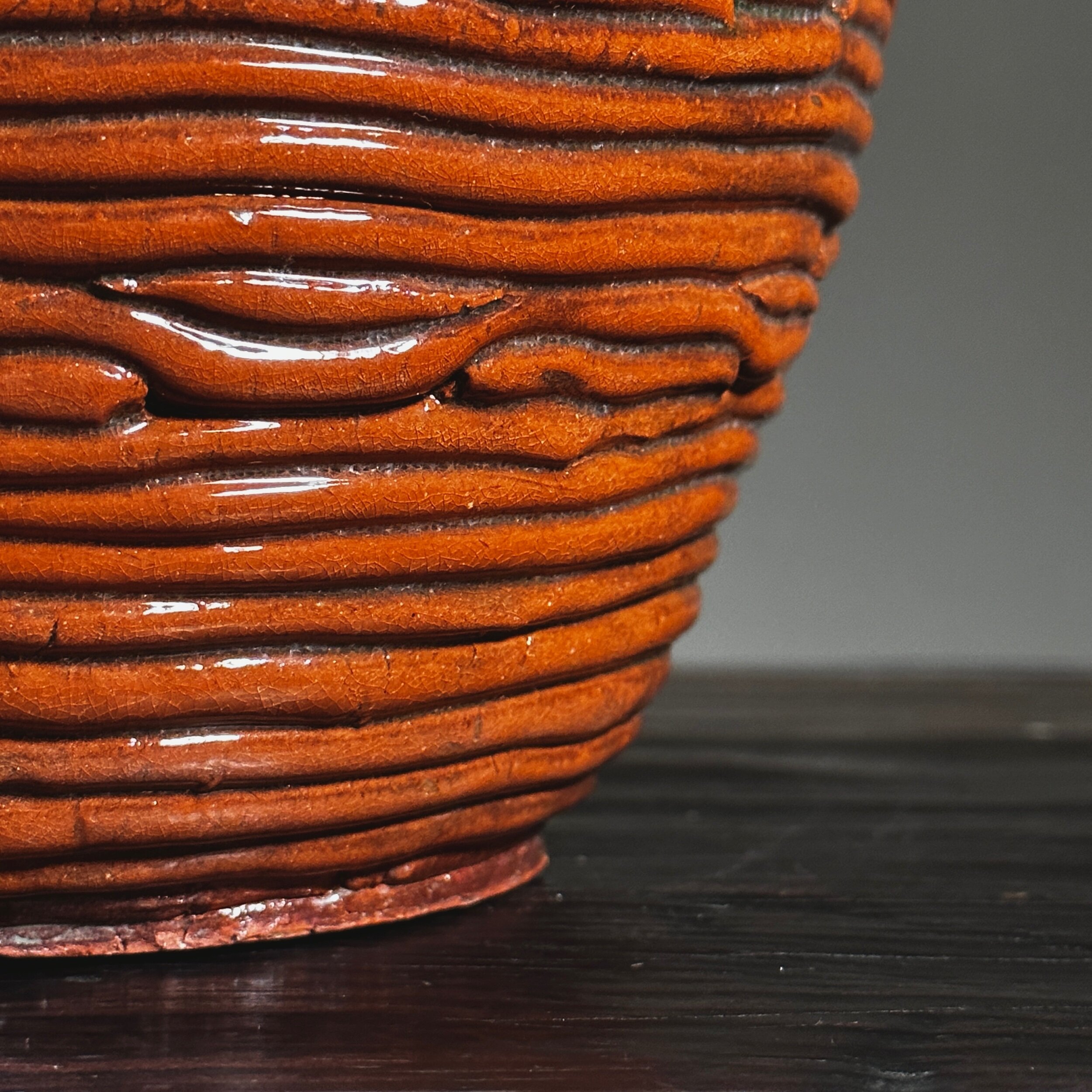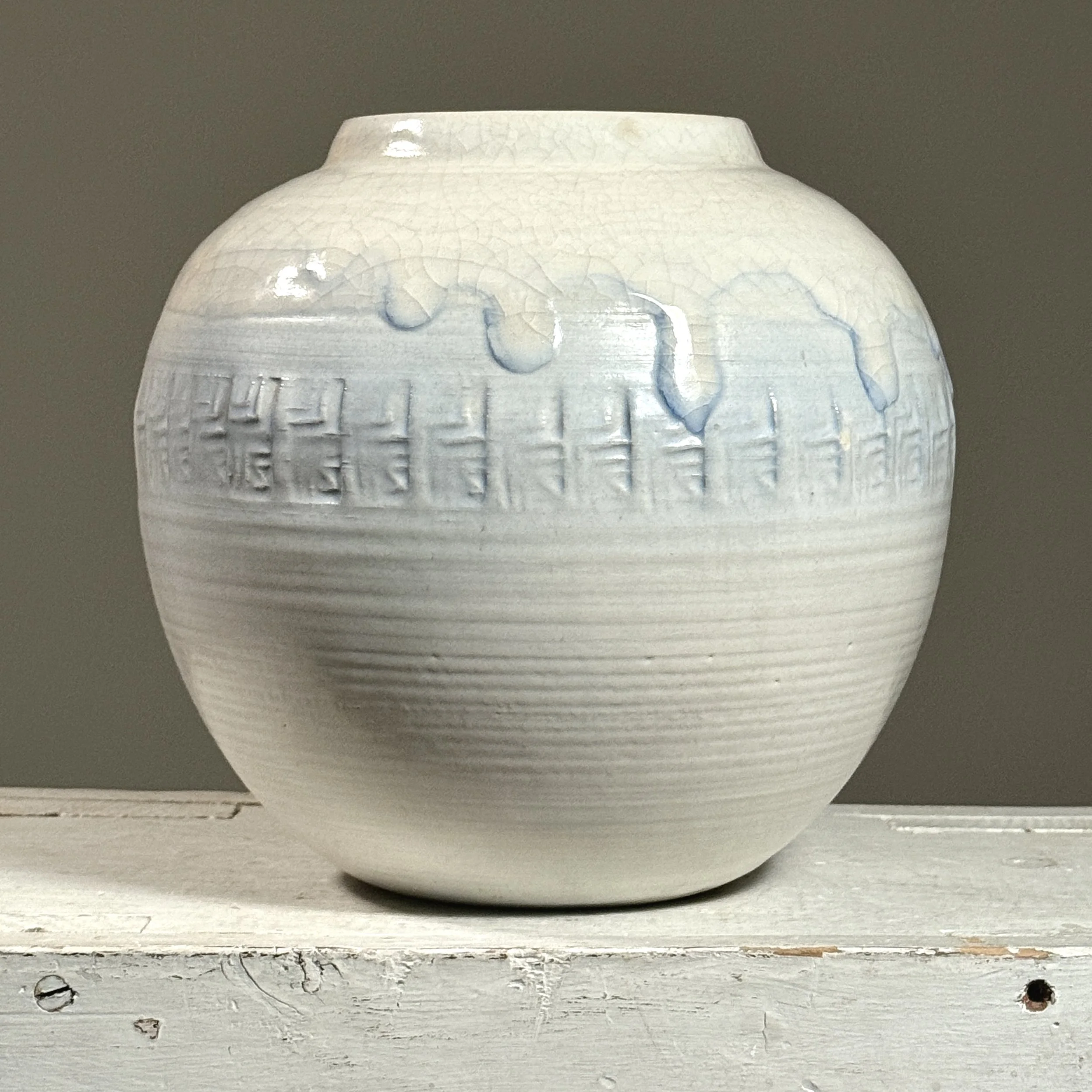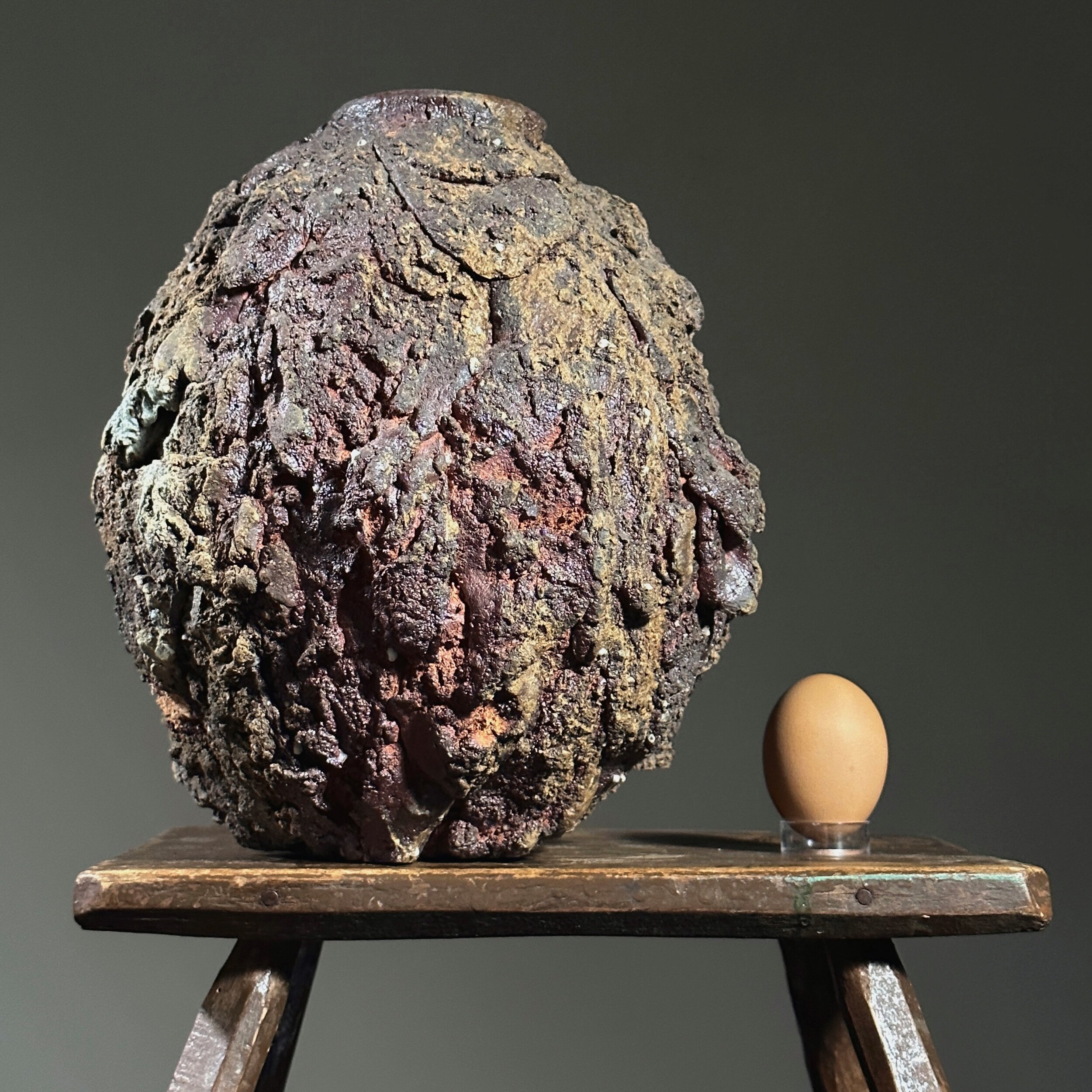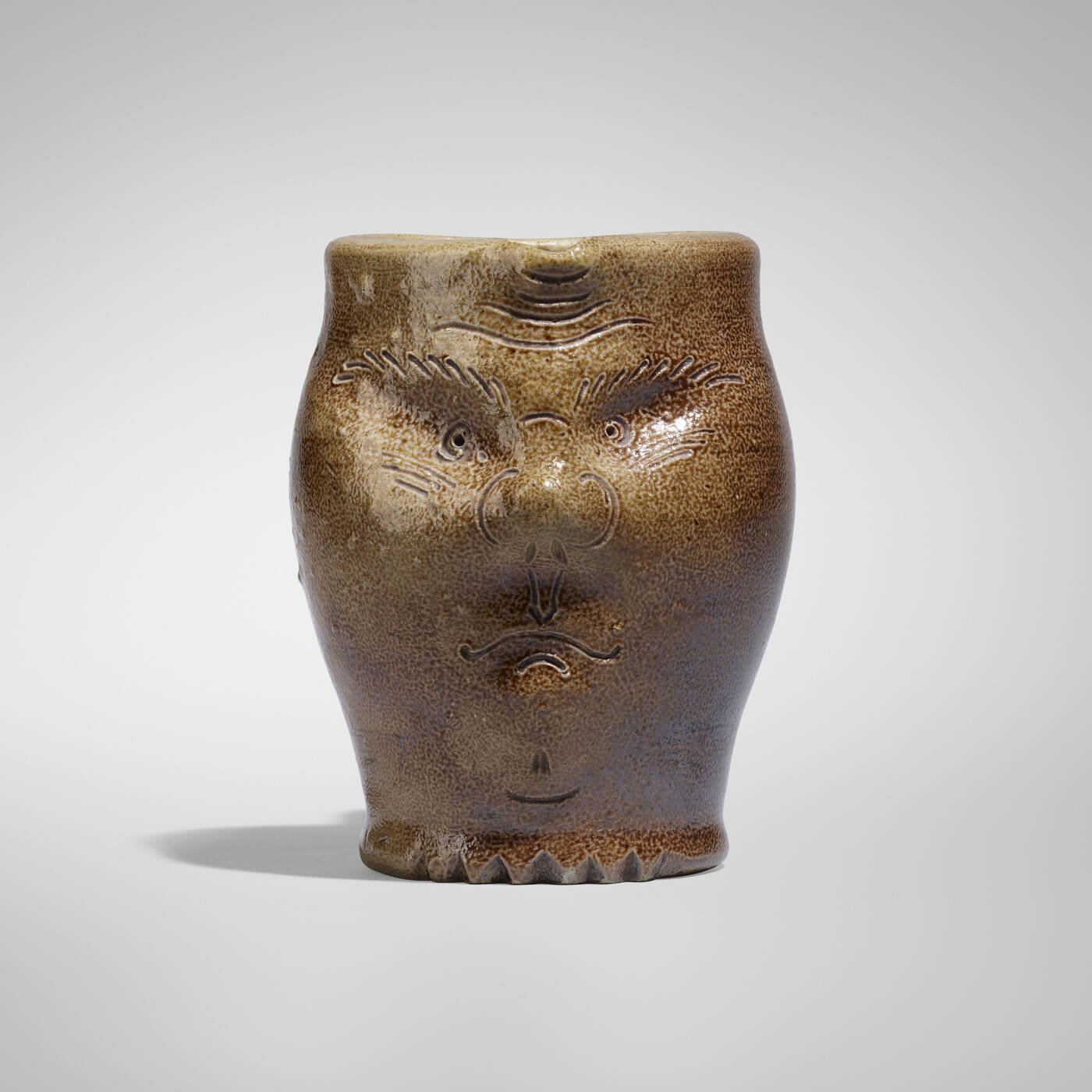 Image 1 of 4
Image 1 of 4

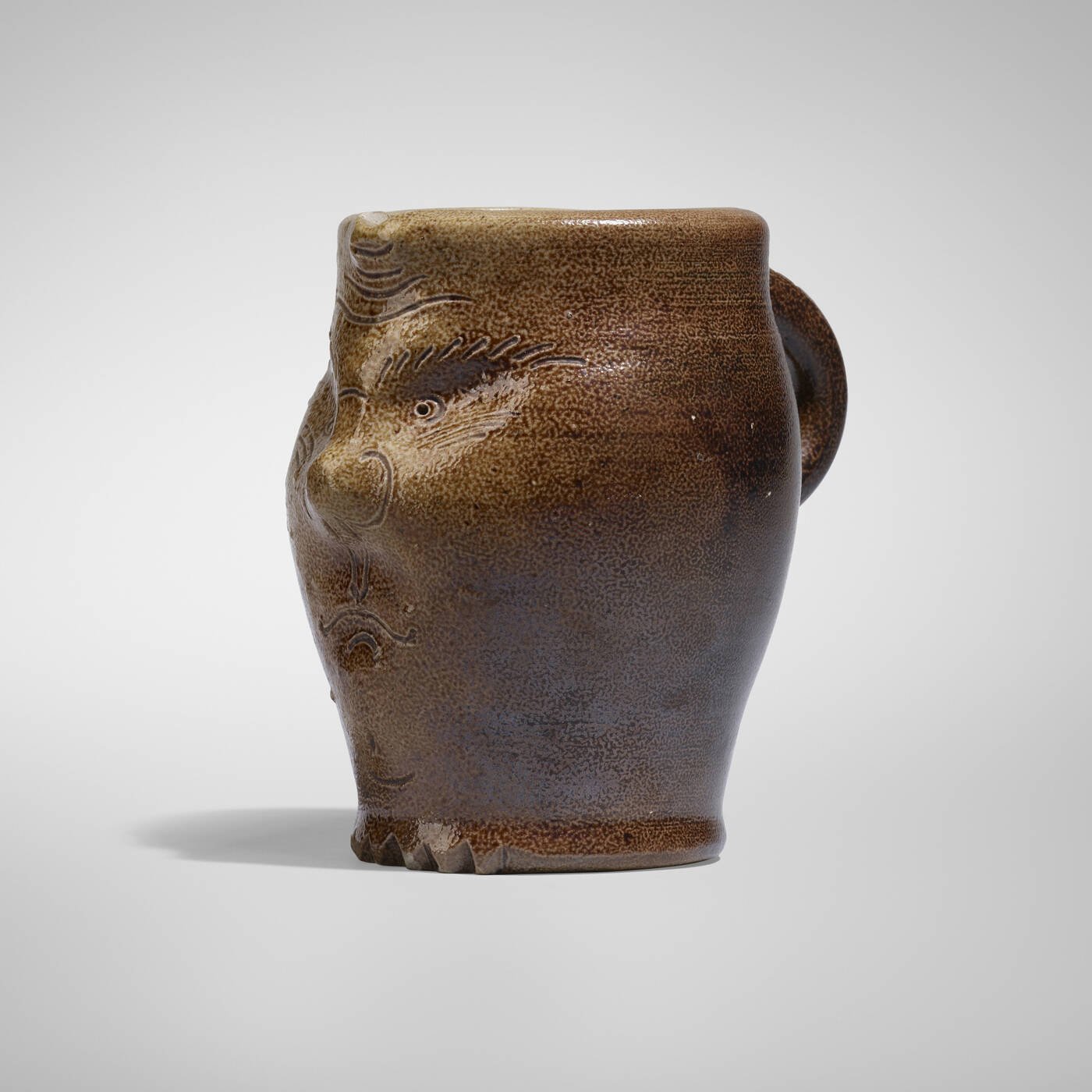 Image 2 of 4
Image 2 of 4

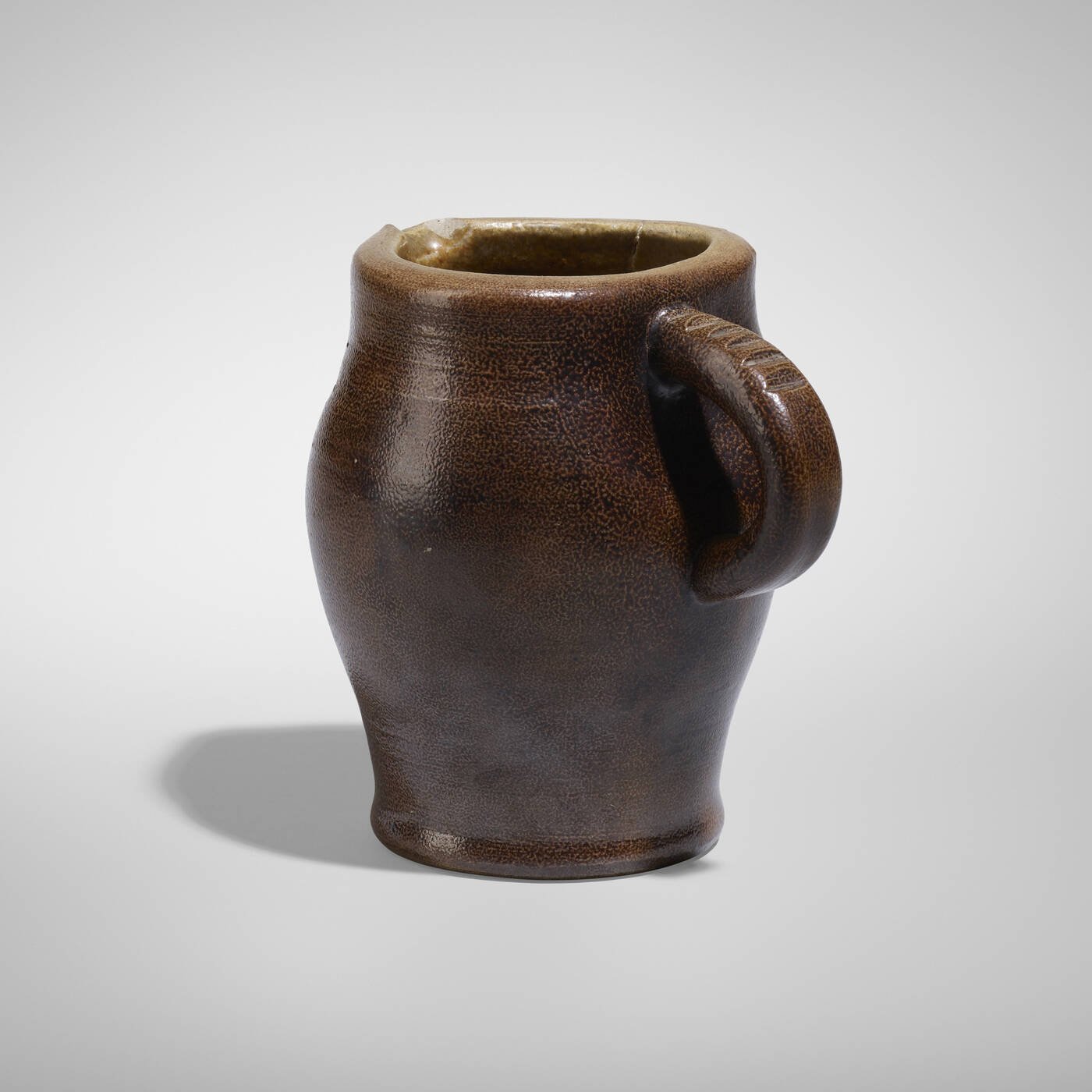 Image 3 of 4
Image 3 of 4

 Image 4 of 4
Image 4 of 4





Paul Beyer (1873–1945) - Anthropomorphic Pitcher, Signed (c. 1900)
Paul Beyer
Pitcher
France, c. 1900
Glazed stoneware
5¼ h × 5½ w × 4 d in (13 × 14 × 10 cm)
Incised signature and number to underside: ‘33 Beyer’
This pitcher exemplifies Beyer’s mastery of form and decoration, featuring an incised anthropomorphic visage that blends organic and sculptural elements. The piece remains in very good condition, with minor wear consistent with its age, preserving the vibrancy of its glaze and the precision of its carving.
Paul Beyer (1873–1945)
A pioneering French ceramicist, Paul Beyer was a leading figure in the Art Nouveau and Art Deco movements, known for his innovative glazed stoneware and expressive, often anthropomorphic designs. Born in Lyon, Beyer studied under the renowned potter Joseph Cheret before establishing his own studio in the early 1900s. His work is characterized by bold forms, intricate incised detailing, and rich, experimental glazes that reflect both naturalistic and modernist influences.
Beyer’s ceramics gained international acclaim, earning exhibitions at the Salon des Artistes Décorateurs and the Exposition Internationale des Arts Décoratifs et Industriels Modernes (1925). Today, his pieces are held in prestigious collections, including the Musée des Arts Décoratifs (Paris), the Metropolitan Museum of Art (New York), and the Victoria and Albert Museum (London).
Paul Beyer
Pitcher
France, c. 1900
Glazed stoneware
5¼ h × 5½ w × 4 d in (13 × 14 × 10 cm)
Incised signature and number to underside: ‘33 Beyer’
This pitcher exemplifies Beyer’s mastery of form and decoration, featuring an incised anthropomorphic visage that blends organic and sculptural elements. The piece remains in very good condition, with minor wear consistent with its age, preserving the vibrancy of its glaze and the precision of its carving.
Paul Beyer (1873–1945)
A pioneering French ceramicist, Paul Beyer was a leading figure in the Art Nouveau and Art Deco movements, known for his innovative glazed stoneware and expressive, often anthropomorphic designs. Born in Lyon, Beyer studied under the renowned potter Joseph Cheret before establishing his own studio in the early 1900s. His work is characterized by bold forms, intricate incised detailing, and rich, experimental glazes that reflect both naturalistic and modernist influences.
Beyer’s ceramics gained international acclaim, earning exhibitions at the Salon des Artistes Décorateurs and the Exposition Internationale des Arts Décoratifs et Industriels Modernes (1925). Today, his pieces are held in prestigious collections, including the Musée des Arts Décoratifs (Paris), the Metropolitan Museum of Art (New York), and the Victoria and Albert Museum (London).



